Pattern research, Iran
Reise und Projekt Stipendium, gefördert von der Stiftung Kunstfonds, Bonn
Eine Über-setzung
Der Teppich als Zeichen eines markierten Bodens, eigenen Territoriums, Land und Lebensraums ist eine sozial-politische Metapher meiner Arbeit. Muster im weitesten Sinne, Ornamente und Zeichen, weisen auf die Tradition eingeschriebener, verinnerlichter Lebensstrukturen hin. Dies gilt für eine Gesellschaft ebenso, wie für das Individuum.
Innerhalb des Projekts „pattern research“ habe ich erforscht, ob es universell verständliche Muster und Zeichen gibt.
Zeichen, die über die Sprache, Kultur und Zeit hinaus ermöglichen, Lebensentwürfe, Gedanken und Geschichten zu kommunizieren.
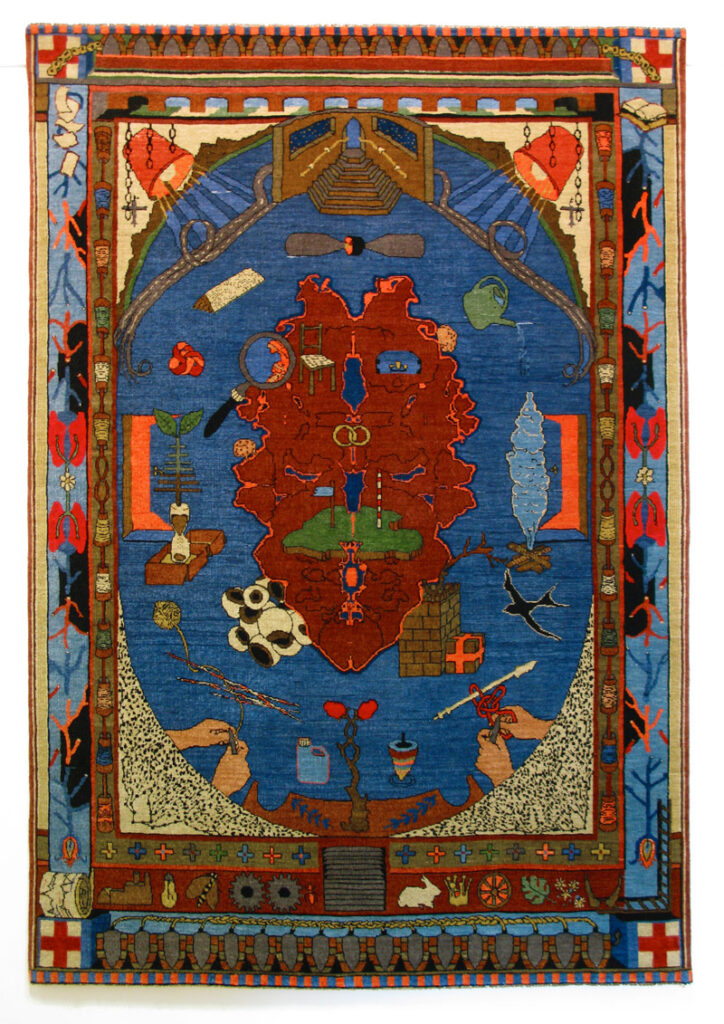
pattern research, handgeknüfter Teppich, Wolle, 180 x 260 cm, 2010

pattern face, Fotoprint, 38,5 cm x 25,5 cm, 15er Auflage, 2009
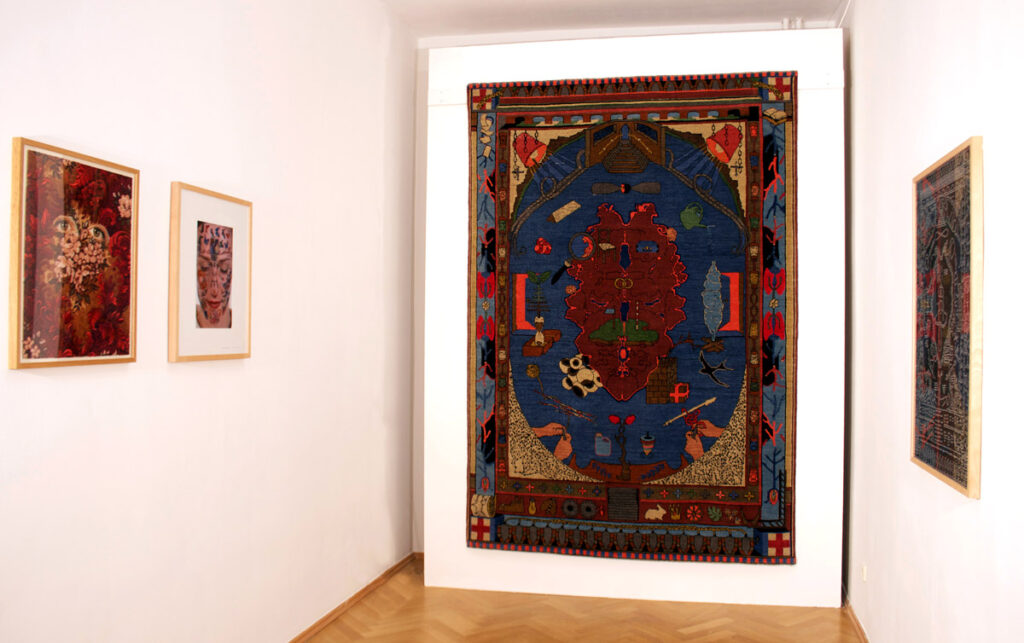
Ausstellung – Musterverschleppung – Galerie Funke, 2011
Das Ziel-Iran
Persien hat eine der ältesten Teppichtraditionen, deren Muster und Ornamentik die Entwicklung einer Zeichensprache für das Unaussprechliche dokumentiert. Der Teppich und seine „Sprache“ entstand in der Zeit, bevor die Menschen sesshaft wurden.
Bei den Nomadenstämmen Zentralasiens wurde der Teppich als Bild der eigenen Familiengeschichte entwickelt. Er gab über Herkunft, Wanderroute und Viehbestand Auskunft, ein geknüpftes „Sippen Album“, ausrollbar nach Ankunft am neuen Standort. Das temporäre Zuhause wurde mit der eigenen Sippen- identität markiert; da wo der Teppich lag war vorübergehend der eigene Lebensraum definiert.
Den Lebensraum durch Bilder aus dem eigenen Leben zu verankern ist weltweit, spätestens nach Erfindung der Fotografie, Teil des modernen Lebens geworden.
Aber wie würde ein Teppich aussehen, der die Geschichten von 15 Frauen aus verschiedenen Regionen und sozialer Herkunft des gegenwärtigen Irans erzählt?
April 2007 machte ich mich auf den Weg. In meinem Gepäck trage ich lediglich das Konzept, Interview – Bögen, eine kleine Kamera, Zeichenpapier und eine Flasche schwarze Tinte. Einfache dunkle Bekleidung und ein paar Kopftücher.In den folgenden 6 Wochen werde ich Iranerinnen besuchen, deren Person und Adressen zum Zeitpunkt meiner Ankunft mir noch unbekannt sind. Ich mache mich auf, um Muster zu „jagen“. Durch die enorme Gastfreundschaft der Iraner, lasse ich mich durch das Land leiten, „hangel“ mich von einer Person zu Anderen, ohne dass die Erste die Dritte kennt. So komme ich zu den Interviews (dank einer Übersetzerin !) von 15 Frauen im Alter von 19–72 Jahren. Am Ende eines jeden Besuchs bitte ich die jeweilige Frau eine Rohrschach-Test zu machen, auf den spontan reagiert werden soll. So sammle ich neben den Antworten auf die Fragen, Fotos, Rohrschachs und deren Assoziation für meinen „Musterkatalog“. Ich besuche eine Lehrerin, eine Knüpferinnen, eine Funktionärstochter und eine zoroastrische Bäuerin, eine irakische Hausfrau und Mutter, eine Rahmentrommel Spielerin, eine Künstlerin, Studentin und eine Kosmetikerin.
Reichlich beschenkt von den Gesprächen, Antworten und Bildern, beginne ich, zurück in Berlin einen umfangreichen ikonographischen Katalog zusammenzustellen.
Ich übersetze die Aussagen in Zeichen; diese werden teilweise zu Mustern und Ornamenten generiert. Die von jeder einzelnen Frau hergestellten Rorschachs füge ich zu einer grossen Form zusammen, die das “Herzstück”* des Teppichs darstellt. Innerhalb dieser Form sind die Aussagen mit der grössten Übereinkunft als Zeichen zu lesen:
Der Stuhl – Zeichen für Warten, Häuslichkeit, Ruhe
Die Ringe – Zeichen für Wunsch oder Furcht vor ehelicher Bindung, Familie, ein Lebensthema mit höchster Priorität
Der Koffer – der Wunsch zu reisen, beweglich zu sein, unabhängig zu sein, neues zu erkunden
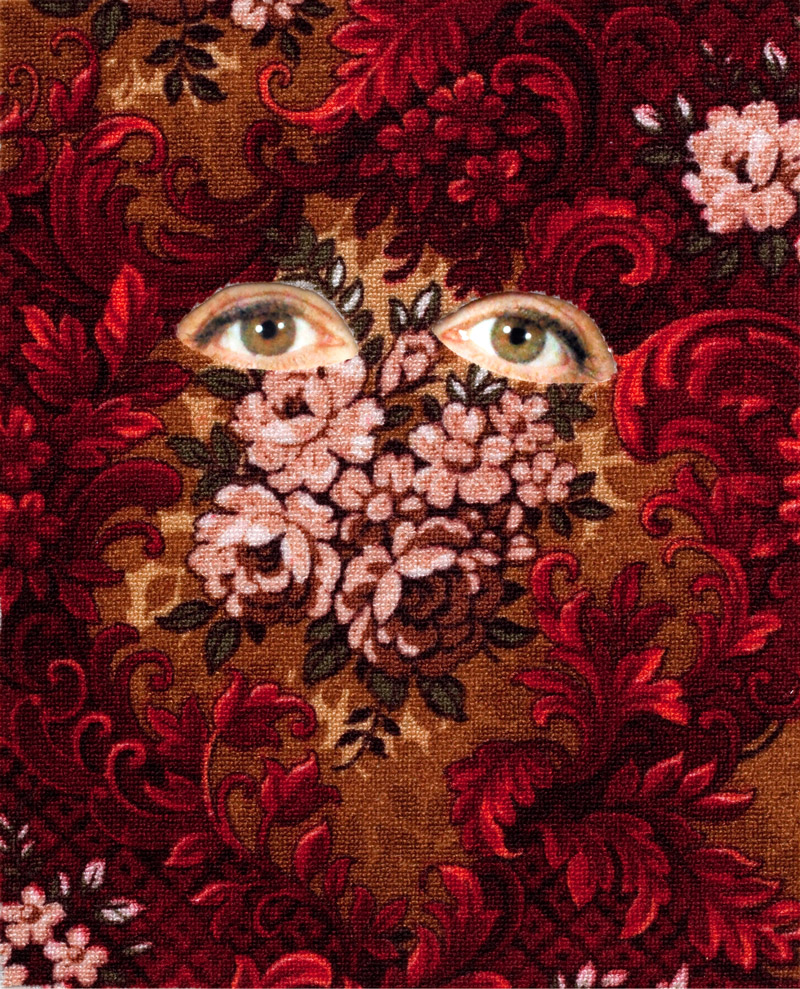
carpet face, me -Teppich, Foto, 57 cm x 46 cm, 2011
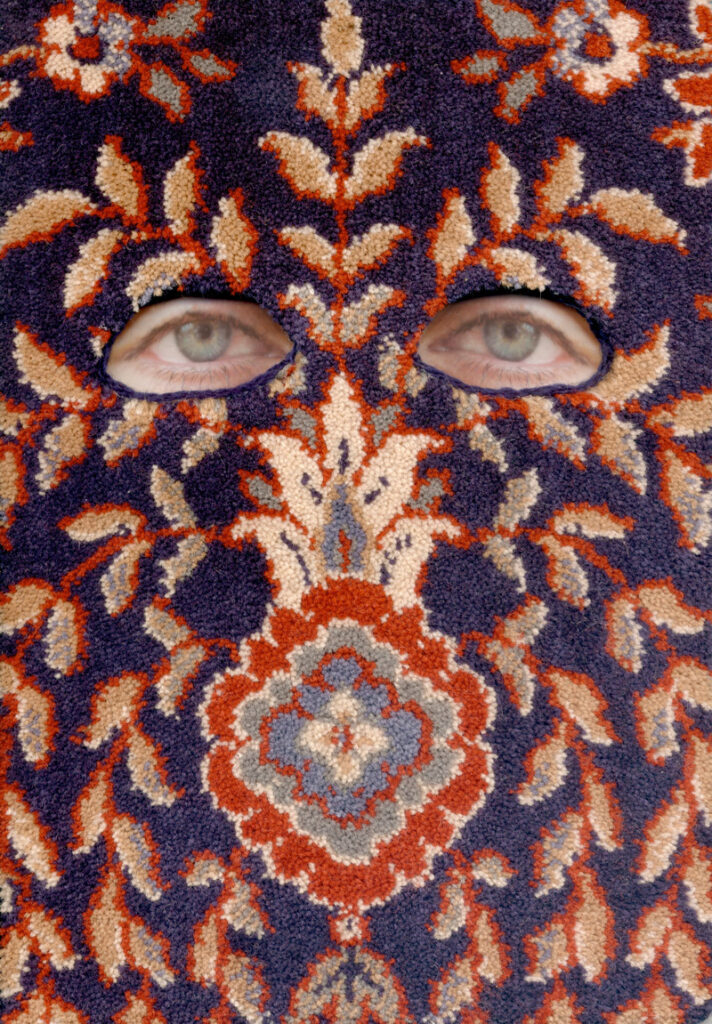
carpet face, you – Teppich, Foto, 50 cm x 40 cm, 2011
Gestern-Heute-Morgen
Schliesslich sitzen 16 Frauen auf einem Teppich, tauschen sich aus über ihr Leben, ihre Wünsche und Befürchtungen; das Muster des Teppichs, entstanden aus Bild gewordenen Aussagen, verknüpften Gedanken, bildet die Grundlage unserer Zusammenkunft.
Ich danke den beteiligten Frauen, die mit mir sprachen und mir das Vertrauen entgegenbrachten, unsere Begegnung künstlerisch umsetzen zu dürfen.
Negin, Nooshin, Merhabi, Hajar, Essmat, Katauan, Mahnaz, Nourieh, Sirim, Arezu, Elham, Nezanin, Mehri, Tooska, Shirin
*Herzstück = Medaillon = brainscan
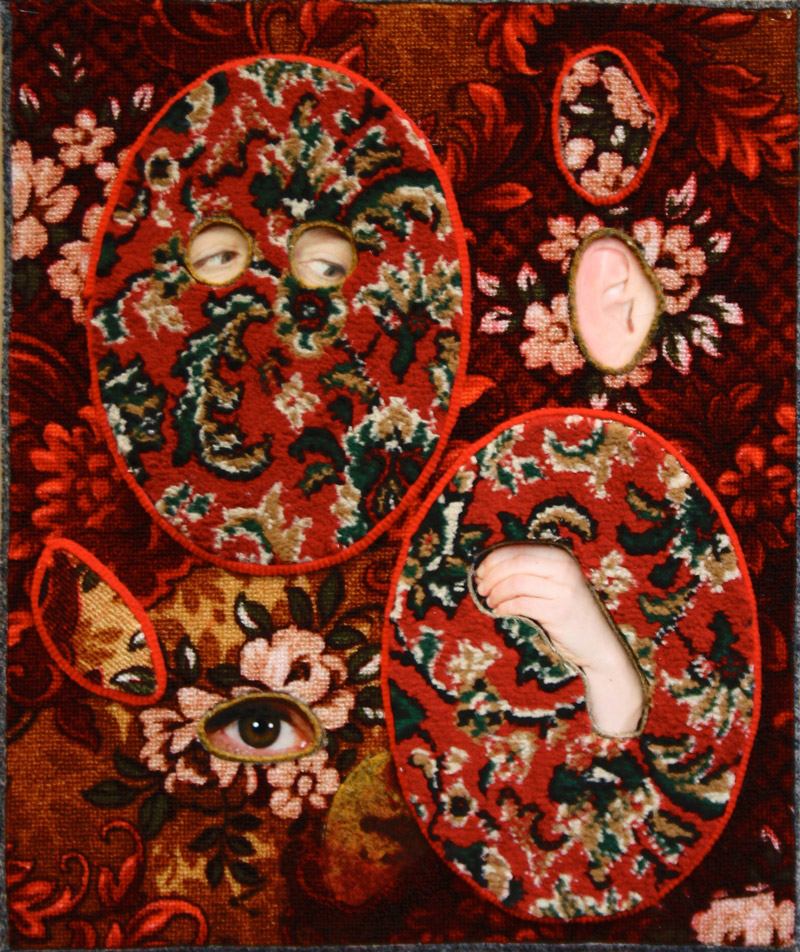
fragmented me, Teppich, Foto, 57 cm x 46 cm, 2011

Danke-ja, Foto-Collage, 2020